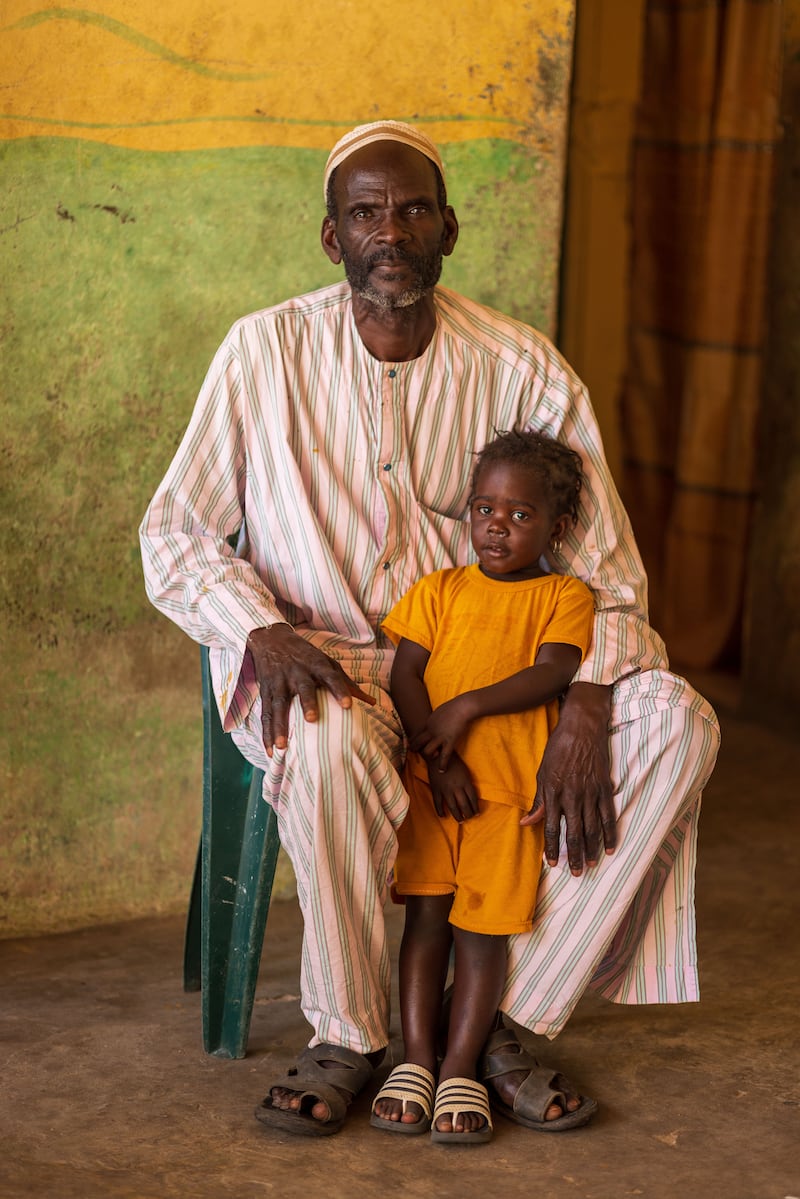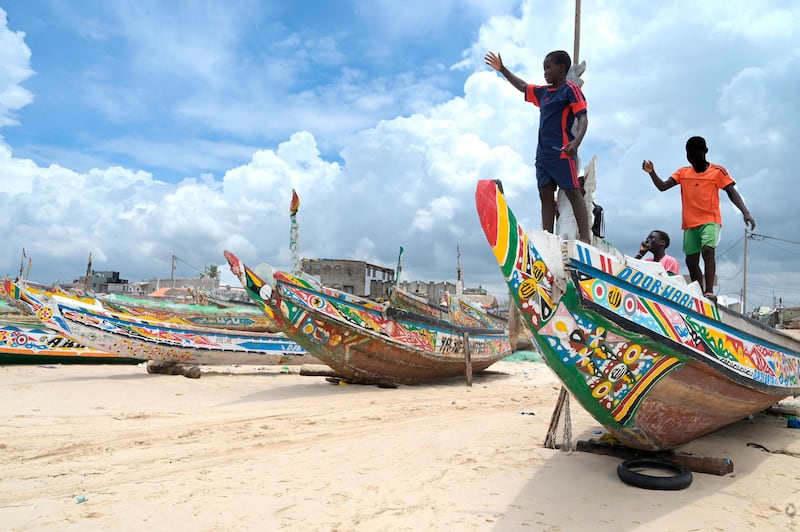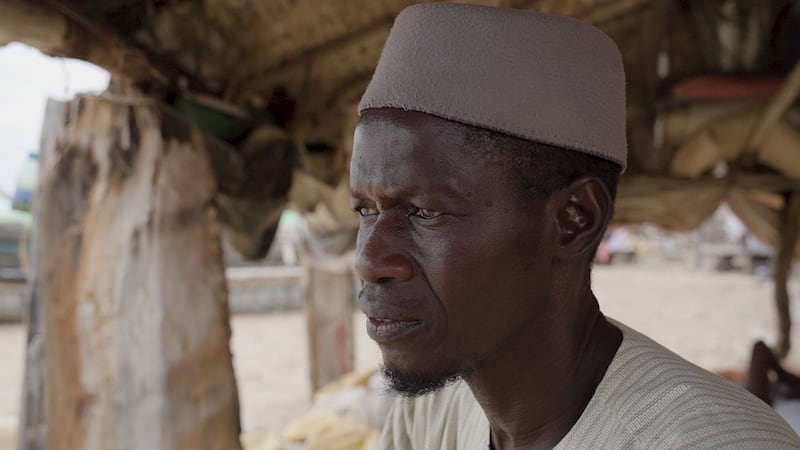Modou Boye Seck grew up hearing how his father landed his boat to become the first fisherman in Fass Boye, a small coastal village in northern Senegal. “It was in 1932. Every person who becomes a fisherman does so because of him,” he says.
As a result Seck, now in his 60s, feels that the village’s traditional reliance on fishing “falls upon my head as his descendant”. It is an increasingly heavy weight to bear.
In the past, he says, “fishing was so abundant and fruitful”. But it has become impossible to catch enough to get by. “Imagine spending three or four days at sea, and when landing you cannot even get back the fuel costs or any other charges … You see by yourself all the boats standing there. No boats go to sea lately.”
The destruction of Senegal’s artisanal fishing industry – blamed largely on overfishing by foreign trawlers – is a key reason, locals say, that increasing numbers of young people are risking their lives to reach Europe by sea. It also explains, they say, why the village is now in mourning.

In August, a boat that set off from Fass Boye was found drifting in the Atlantic Ocean, about 275km off the Cape Verdean island of Sal. It had been at sea for roughly a month. There were said to be more than 100 people on board the boat when it left land. Only 38 survived, while seven bodies were discovered.
Those on board were aiming for the Canary Islands, a journey that should have taken about 10 days. Family members and aid organisation Caminando Fronteras (Walking Borders) say the death toll could have been smaller if a full search and rescue operation was launched weeks earlier, when authorities in multiple countries were alerted that the boat was missing.
Seck says he lost almost 10 relatives. “It is very hard. It is so heartbreaking.” The tragedy “touched every family in this town,” he adds. The victims were young. “Some have wives, some are newlyweds and they don’t even have children yet.”
One of the dead was Seck’s son-in-law. He says his daughter, now a widow, is three months pregnant. “She is so young too … We have to watch over her day and night. She is crying non-stop.”
Still, Seck understands why her husband attempted the journey. “Imagine a newlywed man whose wife is three months pregnant, the only thing he has in mind was how to take care of his pregnant wife and with what money he will have to [pay for] the baptism.”
The Central Mediterranean route – between Libya or Tunisia and Italy or Malta – has been called the deadliest migration route in the world by the UN. More than 22,400 people have died or disappeared attempting it since 2014, more than 2,160 of those this year. Those numbers could be a large underestimate.
But increasingly close behind it is the so-called Atlantic Route, which runs between west Africa and the Canary Islands. It has grown in popularity since EU funding began supporting interceptions off and mass detention in Libya in 2017, and is concurrently seeing increasing numbers of deaths. Analysts fear that the real figures, too, could be much greater than anything documented.

Last year, the UN’s International Organisation for Migration recorded 45 shipwrecks and 543 deaths or disappearances on the route; down from 1,109 deaths or disappearances in 2021.
Caminando Fronteras puts the figure much higher, saying that 778 people died on the route in the first six months of this year, and 1,764 died last year; it says there were more than 4,000 deaths in 2021.
In an investigation published last April, the Associated Press revealed that boats full of corpses, which set out from West Africa, have been washing up in the Caribbean – suggesting that many more may be adrift.
Interviews with relatives of victims of the Fass Boye disaster were carried out by campaigners from the Environmental Justice Foundation (EJF), which visited the village and provided transcripts to The Irish Times.
The NGO campaigns in Senegal – a west African coastal country with a population of roughly 17 million people. There are more than 75,000 artisanal fishers nationwide, according to the EJF, and the industry provides more than 167,000 jobs there. In a new report, the organisation says 77 per cent of interviewees, involved in artisanal fishing, had seen their incomes decrease over the past five years, and 79 per cent were having more difficulty feeding their families.
Bassirou Diara, EJF’s campaigner in Dakar, says there is a “crisis in west Africa”.
“If you save more ocean, people can have hope on their [own] land and stay home.” He says his recommendations include improving transparency, protecting sensitive habitats, restoring ecosystems, and having the government and communities manage fishing stocks together. He argued that the EU needs to play a role in this because “the main part of [the] catch goes to Europe.”
In its new report, the EJF says Senegal’s bottom trawl fleet is one of the largest in West Africa, but it is mainly “controlled by foreign actors in the EU and China through opaque joint venture arrangements that enable the plundering of Senegal’s fisheries resources and the persistence of environmentally damaging fishing practices, to the detriment of local communities.”
“With an artisanal fleet already at overcapacity, artisanal fishers have seen their catch decline dramatically and are forced to compete with the bottom trawl industry for dwindling resources and over fishing grounds. Illegal incursions of bottom trawlers into the area reserved for artisanal fishers are pervasive.”
Fass Boye is a village of “poor people” totally reliant on fishing, Diara says. “[There is] no clean water … We have no hospital … Communities are not rich at all.”
He says boats to Europe are organised in an “informal” way, with passengers connecting through phones and the internet. The captains are usually fishermen – that’s why it is extremely important to understand the links between the depletion of fishing stocks and the increase in these journeys, he said.
Because they are unable to make a living, locals still want to set out on the journey towards Europe, despite the latest catastrophe. “Some people, even today, they say that if they have a chance to go they will do it … [because of] the suffering … the lack of hope,” Diara says.
Assane Diop (45), lives in a neighbouring village to Fass Boye called Diogo sur Mer, where victims of the tragedy also came from. He also blames the tragedy on the failing fishing industry. “There are no fish,” he says.
Locals enter debt, borrowing money to pay for fishing materials, he explained. They have no way to survive between seasons. They notice neighbours or family members finding a “better life and careers” by sailing to Europe and sending money back home. “You see they are able to accomplish things you cannot do being here … For example, your father gets sick and you don’t have money to pay for medical services. You want to get married and you have nothing. Your house needs repairs and you have no money for that.”

What happened was hard for everyone, he said. There would have been “hope” and wishes for “success” borne by each of the people in that boat. He imagined the crises they must have faced on board, as they ran out of food and water, and the trauma that survivors will carry forever.
“Imagine a crew of more than 100 persons … A crew of brothers, cousins, nephews from the same families [listening to] the others calling out because they were hungry, thirsty, and tired. Imagine hearing that until they died and you witnessed all that and being helpless and knowing you will be the next one to die. That traumatising thought only can accelerate your death,” he says.
“Imagine being with someone who died in the boat and you have to throw him in the ocean. That’s a heavy weight to carry. If it was a normal death, it would be less hard because that’s life. We bury and pray for relatives almost every day. But, a corpse thrown into the ocean is unforgettable … Every time you look at the sea, you tell yourself that your brother is still in the sea… That’s why dying at sea is not the same as dying elsewhere. All deaths are hard but dying at sea is the worst.”
These were the young people, he adds, “who should be the strength and the hope of the family.” In some cases, the families would have encouraged them to go.
“These young men were the joy of the town, the hope of the town, the hard workers of the community, the braves of the town … Imagine the loss … They were so young and full of life, to leave like that all together. It will change the face of the town drastically. For sure.”






















